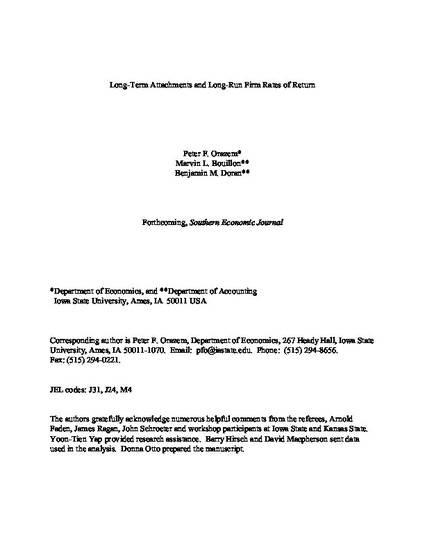
Article
Long-term Attachments and Long-Run Firm Rates of Return
Southern Economic Journal
Document Type
Article
Disciplines
Publication Version
Accepted Manuscript
Publication Date
10-1-2004
DOI
10.2307/4135294
Abstract
Long-term attachments between workers and firms are common. Numerous studies have examined worker returns to tenure, but little is known of firm returns to firm-worker matches. Yet these attachments represent a human capital asset quasi-held by the firm, which is not captured by traditional accounting measures of firm assets. Firms with large quasi-holdings of human capital will have higher measured return on assets, other things equal. Analysis of data on 250 large manufacturing firms supports the view that firms profit from long-term attachments with their workers. Consequently, unmeasured human capital assets contribute to the explanation of persistence in measured long-run excess profits across
Copyright Owner
Southern Economic Association
Copyright Date
2004
Language
en
File Format
application/pdf
Citation Information
Peter F. Orazem, Marvin L. Bouillon and Benjamin M. Doran. "Long-term Attachments and Long-Run Firm Rates of Return" Southern Economic Journal Vol. 71 Iss. 2 (2004) p. 314 - 333 Available at: http://works.bepress.com/peter-orazem/75/

This is the peer reviewed version of the following article: Orazem, Peter F., Marvin Bouillon and B. Michael Doran. 2004. “Long-term Attachments and Long-Run Firm Rates of Return.” Southern Economic Journal 71 (2):314-333, which has been published in final form at DOI: 10.2307/4135294. This article may be used for non-commercial purposes in accordance with Wiley Terms and Conditions for Self-Archiving.